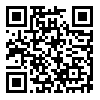<>
Volume 6, Issue 2 (4-2023)
JSAL 2023, 6(2): 41-62 |
Back to browse issues page
Download citation:
BibTeX | RIS | EndNote | Medlars | ProCite | Reference Manager | RefWorks
Send citation to:



BibTeX | RIS | EndNote | Medlars | ProCite | Reference Manager | RefWorks
Send citation to:
Nemati N, Khataei S. (2023). Representation of Ideology in Political Caricatures, from the Persian Constitutional Revolution to the Contemporary with a Sociological Approach [In Persian]. JSAL. 6(2), 41-62. doi:10.52547/jsal.6.2.41
URL: http://jsal.ierf.ir/article-1-29-en.html
URL: http://jsal.ierf.ir/article-1-29-en.html
1- MA of Visual Communication, Faculty of Architecture and Urban Planning, Shahid Rajaee Tarbiat Modarres University, Tehran, Tehran , nasimnemati8@gmail.com
2- Assistant Professor, Faculty of Architecture and Urban Development, Shahid Rajaee Tarbiat Modarres University, Tehran, Tehran
2- Assistant Professor, Faculty of Architecture and Urban Development, Shahid Rajaee Tarbiat Modarres University, Tehran, Tehran
Abstract: (3809 Views)
Caricature is a visual and humorous art form used for media and communication. In caricature, meaning and wit are derived from two semiotic expressions, either verbal and visual or solely visual. The three language techniques of exaggeration, contradiction, and metaphor contribute to creating humor in caricatures, which result from the interaction of verbal and visual elements and the use of visual metaphor. Another abundant source of non-linguistic metaphor representation is the caricature. By examining the phenomena of language, art, politics, and religion, as well as other objective manifestations of metaphor, it is possible to uncover ideology and the human cognitive system. In contrast, the theory of critical analysis of speech seeks to investigate caricature as a social action related to power, ideology, and discourse. Due to caricatures' content compression, brevity, and interaction between language and image, caricatures are quick and straightforward methods to process a message. The audience's unanimity in receiving the message causes them to adopt the desired perspective. Through the use of humor and image literacy, the audience's self-awareness and conceptual literacy will be enhanced. The representation of ideology in political caricatures is founded on two sociological perspectives and linguistic analysis. This study examined the depiction of ideology in political caricatures from the Persian Constitutional Revolution to the present, focusing on significant events such as the July 21, 1952 uprising, Iran's Islamic Revolution, the Iran-Iraq War, nuclear energy and sanctions, and resistance to the economy. The beginning of the Persian Constitutional Revolution, the concepts of freedom, awakening in front of the sleep and decline of the nations, in the form of conflict between good and evil forces, blowing horn and the resurrection of the dead, nationalization of the Iranian oil industry, concepts of independence, and drawing the occupier in the minds like a captive anima have been conceptualized in political caricatures based on the findings of this study. In verbal-visual political caricatures from the beginning of the Persian Constitutional Revolution, the formation of the caricature is based on a humorous poem and the concept of an auction, a mosque with large rocket domes, and a nuclear bomb symbol representing religion and imposed war. In the first group of images, which contained pictorial metaphors, the symbols of freedom, the symbolic symbols of the occupation's encroachment on Iran's hydrocarbon resources, and the symbols of impertinent and unintelligible representatives are depicted. In the reader's consciousness, the relationship between origin and destination is formed by combining the concepts of origin and destination and unexpectedly filling part of a schema. In the group of verbal-visual caricatures, the same relationships and the stabilizing function of inflated writing map the relationship between the concepts of war's origin and destination.
Keywords: Caricature, Constitutional Period, Contemporary Period, Sociology of Language, Critical Analysis, Semiotics
Type of Study: Research |
Subject:
Sociolinguistics
Received: 2020/08/2 | Accepted: 2021/06/5 | Published: 2023/04/22
Received: 2020/08/2 | Accepted: 2021/06/5 | Published: 2023/04/22
References
1. Bayat, M. R., (2002), "Art encyclopedia (painting, sculpture, and graphic art)", Zamaneh, Oct. 2002, No. 1, pp. 28-37.
2. Pakbaz, R. (2011), The Encyclopedia of Art (Painting, Confectionery and Graphic Arts), 10th Edition Tehran: Contemporary Culture Publication.
3. Haji Mohammadi, A., Ravdrad, A., (2014), "Popular culture and international politics (Visual analysis of American Political Cartoons on the Iran's nuclear program from cultural studies perspectives)". Journal of Culture-Communication Studies, Vol. 15, No. 26, pp.105-130.
4. Khalili, H., (2012), "Economic Resistance in the Light of Resistance Economics", Detective, Autumn, Vol. 5, No. 20, pp. 24-43.
5. Saher, H., (1998), Evolution of 70 years Caricautr in Iran, Saeedeh Zanganeh, 1th Edition, Tehran: Aterpat book.
6. Soghrati, S. A., (2008), "revolution art: The Openness of Thought in the Caricature of the Revolution", Tandis, Bahman, No. 142, pp. 11-11.
7. Shah Wali, M., Moshfeq, J., (2006), "Examining the information function of caricature", Keyhan Caricature, Oct, No. 175 and 176, pp. 4-9.
8. Shojaee Tabatabaei, S., (1992), "Caricature in Iran (1)", Keyhan Caricature, April, No. 1, pp. 6-9.
9. Shakouri, A., (2006), "The Role of Caricature in People's Awakening", Memorial, Autumn, No. 81, pp. 375-382.
10. Ziaee, M., (2009), A file for the caricature, 1th Edition. Tehran: Soureh Mehr Publication.
11. Abbasi, I., (2001), "Political Caricature", The Month of Art book, June and July, No. 33 and 34, pp. 100-105.
12. Alam, M. R., Bahrami, N., (2013), "An Analysis of Political Approaches in Iran", Quarterly Journal of Social Development, Seventh Edition, Summer, No. 4, pp. 107-128.
13. Niroumand, M., Shojaee Tabatabai, S., (2003), "Critical Art of Barefoots: Study of the Post-Revolutionary Caricature", Sura Andisheh, February and march, No. 7, pp 48-56.
14. Veicy, H. (2012). "The Role of Nuclear Energy in Iran's National Power", political studies of Islamic world, Vol. 1, No. 1, pp. 73-92. Doi: 10.30479/psiw.2012.66.
15. Hezavi, S., Ziraki Heydari, A., (2014) "Resistance Economy; A symbol of revolutionary management in Iran's political economy", Islamic Revolution Studies, Summer, No. 37, pp. 9-26.
Send email to the article author
| Rights and permissions | |
 |
This work is licensed under a Creative Commons Attribution-NonCommercial 4.0 International License. |








